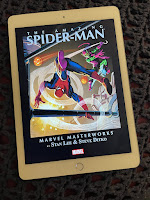 Bye Bye, Baby
Bye Bye, Baby features an embarrassment of riches in the subject matter department: Frank Sinatra, the Kennedys, Hugh Hefner, the mob, Cuba, the swinging 60’s, the movie business, and, most of all, the dazzling Marilyn Monroe. One almost suspects that the rich subject matter alone would make for a halfway decent book, regardless of the skill of the author. But thankfully that supposition isn’t put to the test here, as the author in question is the battle-tested Max Allan Collins, an established master of the “novel based on actual events” genre.
As far as its ability to capture the imagination, one can’t complain about the case the writer chooses to examine this time out. Interacting with a variety of show business, political, business, and criminal figures of the early 1960’s, Collins’ fictional private detective Nate Heller gradually puts the pieces together in his quest to unearth what really happened to his friend and occasional lover Marilyn Monroe in August of 1962. Heller’s investigation, which mirrors actual investigations of the time and during the years following the star’s death, ultimately results in a credible, believable solution to what most people to this day consider a shrouded mystery that has little to do with the official findings.
Of course, when I credit Heller, I’m really crediting author Collins for delivering the immersive, fascinating, and entertaining investigation that comprises the bulk of
Bye Bye, Baby. As he does in the previous Heller books, all of which involve real-life cases with lingering questions, Collins performs a skillful balancing act here: letting research and historical details have more attention and breathing room than they do in his other, more fast-paced thrillers, but never to the point where boredom or fatigue sets in. On the contrary, the generous details are wonderful and often fun.
A prime example: an extended scene describing a party at the Playboy Mansion in its 60’s heyday is not strictly needed, at least not at its presented length, to relate needed information and propel the narrative. But you’ll be glad to read every word of this little trip back in time to when Hugh Hefner and Playboy Magazine were truly cultural forces, not the quaint recollections of mild naughtiness they’re painted as today. It’s a great scene.
The book actually has two flavors, both successful but distinct. The early going feels more novelistic and artful, as it relies more on Collins’ imagination, not an accumulation of researched facts. That’s because this section of the book largely deals with Nate Heller’s friendship with Marilyn Monroe, an entirely fictional relationship. Research still plays a part here, as the friendship- playful, sweet, often sexual- allows Collins to reconcile the various, often contradictory accounts of Marilyn Monroe’s personality and create a living, breathing person. But ultimately, this part of the book is fantasy (well, a fantasy for male readers, at least) as Collins, through Heller, lets us imagine what it might have been like for a regular person (like all of us!) to fall into the sphere of the reigning sex symbol of the 1950’s and 60’s.
The more imagination-driven first part of the book also performs another important function: it gets both Nate Heller and the reader sufficiently taken with the brilliant, troubled star, so that when she is eventually found dead in her bed from a drug overdose, both detective and reader want to get to the bottom of it.
The death of Marilyn Monroe immediately shifts the tone of the book, and Collins has to quickly add traffic cop to his artistic and literary functions. That’s because his impressive level of research is now addressed in a fast and furious manner, and known facts have to be channeled, aligned, prioritized, temporarily sidelined until they’re ready to be fully addressed, and organized in all manner of other ways. Collins does a great job here, managing and presenting the facts he needs to relate to build his case, but never letting them overwhelm us.
And the author does all that while never forgetting to tell an entertaining story populated by entertaining characters. It’s really quite a feat. Reconciling all the facts and personalities in play to come up with a believable hypothesis about what really happened to Marilyn Monroe was, I’m sure, an academic, intellectual exercise in many ways. But it feels like anything but that. The last half of the book is energetic, adrenaline-inducing, exciting. And, demonstrating that it also has something in common with the first half of the book, it really captures the imagination.
Pulling back and looking at
Bye Bye, Baby as a whole, one sees an accomplished work with a complex agenda: it wants to entertain, inform, educate, and intelligently speculate, usually simultaneously. That it does all these things with flying colors makes it more than capably deliver the final item on its agenda: being a cracking good read.
Bye Bye, Baby is available on Kindle for $11.99.
















